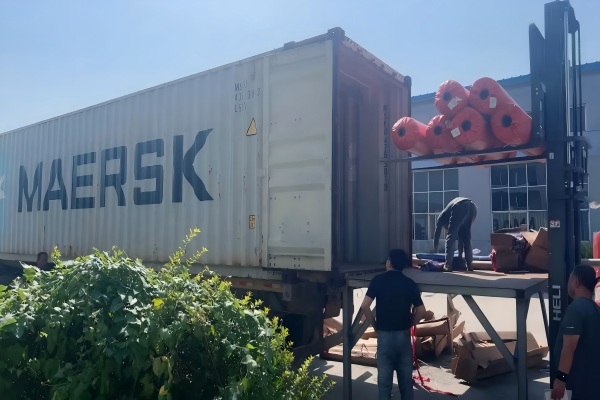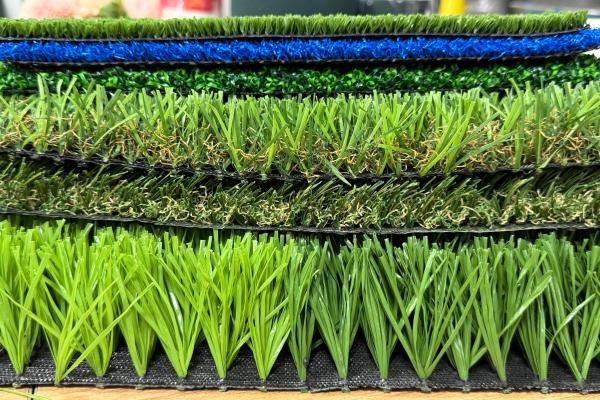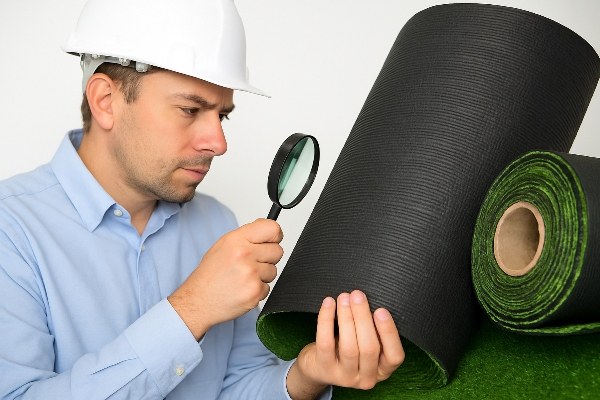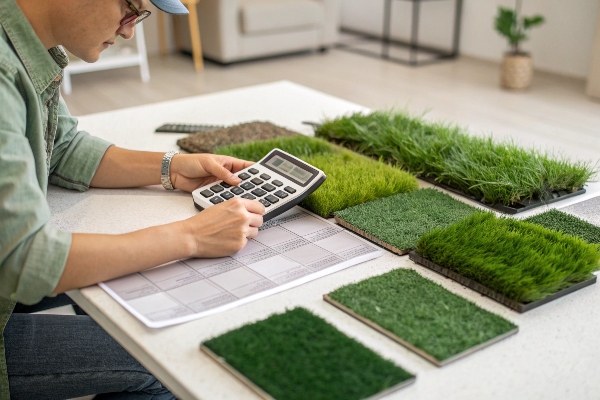Struggling to find a dependable artificial grass supplier? You worry about low quality, high prices, and untrustworthy sellers. I will show you where to find great turf you can trust.
The best place to buy good artificial grass is directly from experienced manufacturers. This approach allows for better quality control, access to expert advice, and more competitive pricing by removing intermediaries. Look for suppliers with a strong track record and transparent production processes.

Finding the right supplier is a big challenge. I’ve seen many business owners get frustrated. They spend a lot of time searching online and at trade shows, but still feel uncertain. It’s not just about finding a product. It’s about finding a partner you can trust. This decision can make or break your project’s profitability and reputation. Let’s break down what you need to look for so you can make a confident choice.
What is the best artificial grass you can get?
Confused by all the different artificial grass options available? Choosing the wrong type can lead to unhappy clients and costly replacements. I will explain what "the best" really means for you.
The "best" artificial grass depends entirely on its intended use. For sports fields, focus on durability and performance specifications. For landscaping, prioritize a realistic look, soft feel, and UV stability. There is no single "best" product, only the best one for your specific project.

I often get asked, "Tom, just tell me which grass is the best." I wish it were that simple. When I started in the technical department, I learned that every specification matters. The best grass is a combination of the right materials for the right purpose. Think of it like buying a car. A sports car is "best" for racing, but a truck is "best" for hauling heavy loads. It is the same with artificial turf. For a client building a community football field, we need to focus on durability above all else. But for a luxury hotel’s garden, aesthetics and softness are the most important factors. The real "best" choice comes from understanding your project’s unique needs and matching them with the right technical specifications. This is how you ensure both your satisfaction and your client’s.
Key Factors for "Best" Grass
| Feature | Sports Application (e.g., Football) | Landscaping Application (e.g., Garden) |
|---|---|---|
| Yarn Shape | Diamond, S-shape for resilience | C-shape, W-shape for realism and softness |
| Pile Height | 40mm – 60mm | 25mm – 40mm |
| Stitch Rate | High (e.g., 200 stitches/m) for density | Medium to high for a lush look |
| Infill | Required (Sand & Rubber) for performance | Optional or Sand-infill for stability |
How to tell if artificial grass is good quality?
Are you fearful of receiving a shipment of low-quality turf? Bad turf fades, flattens, and falls apart. This can ruin your project’s reputation. I will teach you how to spot high-quality grass.
To check quality, inspect the backing, yarn density, and material. A good product has a strong, multi-layer backing that does not shed. The turf should feel dense when you run your fingers through it. High-quality yarns made from new PE materials will be resilient and UV-stable.

I remember a client who had a terrible experience with a previous supplier. The turf looked great when it was installed. But after just one season, it started falling apart. The backing was shedding black bits everywhere. This is a common problem with low-quality products made to be cheap. When I inspect grass, I am very strict. I always check three main things to guarantee quality for my clients.
My Quality Inspection Checklist
First, I check the backing. I try to pull it apart with my hands. A quality backing is usually a double or triple layer of PP cloth and net, coated with SBR latex or PU. It should be tough. Second, I look at the yarn. I pull on a single blade of grass. It should not come out easily. This is the "tuft lock" strength. A good tuft lock means the grass is securely stitched into the backing. Third, I check the raw material claims. The best yarns are made from 100% new polyethylene (PE). Some factories mix in recycled materials to cut costs. This makes the grass less durable and prone to fading. Always ask for material certification to be safe.
| Quality Indicator | Good Quality | Poor Quality |
|---|---|---|
| Backing | Strong, even coating, hard to tear | Flimsy, sheds black particles, tears easily |
| Yarn Density | Dense, lush, hard to see backing | Sparse, you can easily see the backing |
| Tuft Lock | Blades are very difficult to pull out | Blades pull out with little effort |
| Feel | Soft yet resilient, springs back | Waxy, stiff, or overly soft and limp |
How much should I expect to pay for artificial grass?
Are you worried about overpaying for your artificial grass? Extremely low prices often mean bad quality. But high prices do not always guarantee the best product. I will explain fair pricing for you.
Expect to pay between $1.50 to $4.00 per square foot from a manufacturer. This equals about $15 to $40 per square meter. The price depends on specifications like pile height, face weight, and material quality. Premium sports turf is often at the higher end.

Price is a big concern for every business owner, especially for large projects. I once had a client who was choosing between my quote and a much cheaper one. He was tempted by the very low price. I took the time to explain that cutting corners on price often means cutting corners on raw materials or production quality. For example, a factory can reduce the face weight, which is the amount of yarn used per square meter. They might also use a cheaper, non-UV-stable masterbatch for coloring to save money. These savings for the factory lead to big problems for the buyer later on, like fading and rapid wear. The price is not random; it is based on real costs that determine the final quality of the turf.
What Drives the Cost of Artificial Grass?
- Face Weight: This is the weight of the yarn in a square meter. More yarn means a denser, more durable, and more expensive product.
- Pile Height: Taller grass blades require more material, so a 50mm football turf will cost more than a 30mm landscape grass.
- Raw Materials: Using 100% new PE is more expensive than using recycled materials. A high-quality UV inhibitor adds to the cost but is essential for preventing fading.
- Backing: A polyurethane (PU) backing is more expensive but offers superior water resistance and tuft lock compared to a standard SBR latex backing.
| Specification | Lower Price Range | Higher Price Range | Impact on Quality |
|---|---|---|---|
| Face Weight | 800 g/m² | 2000+ g/m² | Durability, Density |
| Material | Recycled PE mix | 100% New PE | Lifespan, Safety, UV Resistance |
| Backing | SBR Latex | Polyurethane (PU) | Tuft Lock, Water Resistance |
Remember our slogan: "Stable quality and competitive prices." The goal is not finding the lowest price, but the best value that ensures your project’s success and your long-term profits.
Conclusion
Finding the right artificial grass means matching quality to your specific needs at a fair price. By focusing on key specifications, you can secure a profitable and successful project.
_画板-1.png)
_画板-1.png)